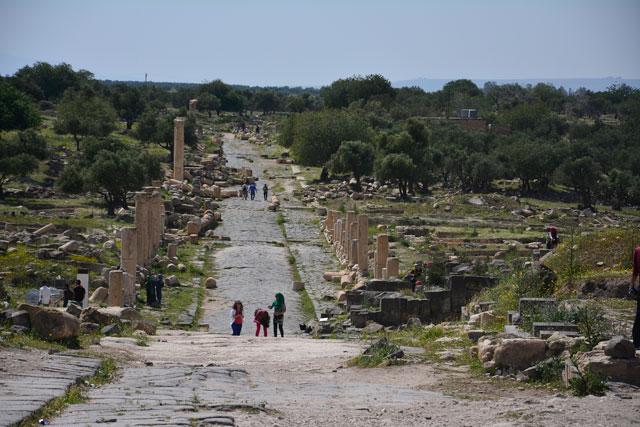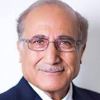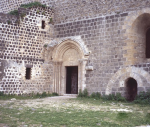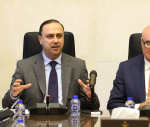You are here
Urbanisation, vandalism among challenges facing archaeological heritage — DoA
By Saeb Rawashdeh - Jan 26,2017 - Last updated at Jan 26,2017
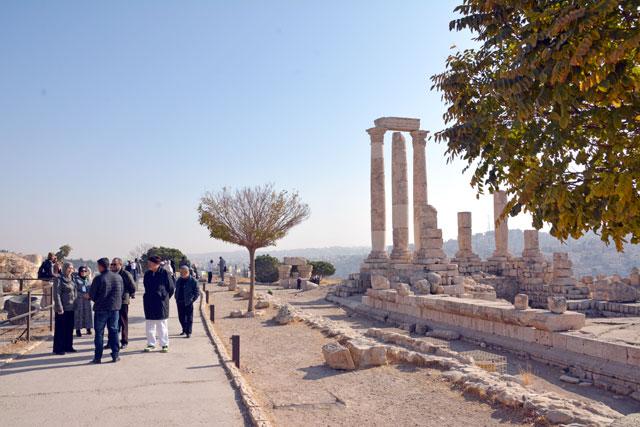
A recent photo of the Amman Citadel. The Department of Antiquities says that Jordan’s sites and monuments, as testimonies to the breadth of human innovation, should be respected and saved (Photo by Amjad Ghsoun)
AMMAN — Alongside oil smuggling, kidnap and ransoms, Daesh raises funds for its terror campaigns through a lesser-known activity: illicit trade in archaeological artefacts.
This was one of the themes discussed in a conference in September last year dedicated to the smuggling of artefacts and valuable objects.
In Jordan, the Department of Antiquities (DoA) is on the frontline of stemming this illegal trade, as well as preserving and promoting the Kingdom’s rich heritage, its director, Monther Jamhawi, said at a lecture in Amman on Tuesday.
Established in 1923, the DoA is the oldest government department in Jordan, Jamhawi explained, in a presentation “A New Perspective for the Protection of Threatened Cultural Heritage”, held at the American Centre of Oriental Research.
The current political situation in the region directly affects the protection and preservation of archaeological sites, as well as the problem of illicit trade in artefacts, the official said.
According to the DoA, around 100,000 Jordanian archaeological sites have been identified, and 27,000 have been well-documented.
The DoA has the responsibility “under the law, to excavate, restore and protect Jordan’s antiquities and to present part of the antiquities as a cultural tourism product”.
It is “an endless task” to protect all uncovered sites, Jamhawi said.
He stressed that sometimes, the priority is the restoration and designation of sites, as the DoA tries to protect all sites equally in all corners of the Kingdom.
With regional conflicts and the threat of Daesh presenting new challenges, new approaches are needed in order to save the country’s — and the world’s — heritage, Jamhawi said.
Before joining the DoA he was a professor of conservation and management of cultural heritage at the Jordan University of Science and Technology.
Military conflicts in the region and illicit trade are not the only issue, Jamhawi noted, explaining that vandalism is another problem the DoA faces.
Conventional measures are not enough to prevent the harm and destruction of the Kingdom’s cultural heritage, he warned, with cultural vandalism often happening on an industrial scale.
In many instances, the construction of dams and highways have destroyed archaeological sites, so a new approach is needed in order to prevent further destruction of the country’s rich cultural heritage.
“One of major challenges is the very big number of archaeological sites in Jordan,” Jamhawi emphasised, adding that other crucial factors include the political situation in the region, rapid urbanisation, a lack of awareness, poverty and unemployment.
“We worked hard to build up a partnership with our friends and to remain under a legal framework,” the director said.
He particularly praised the collaboration with the police, who have so far managed to recover thousands of artefacts from illegal trade rings.
Around 144 stolen objects have been sent back to Egypt, while 2,500 were returned to Iraq, he added.
Another task for Jamhawi and the DoA is the establishment of the national inventory system of archaeological heritage of Jordan (MEGA Jordan).
The website will provide geographic locations of archaeological sites at the national level, the director explained.
Physical measures, such as putting up higher fences, increasing the number of guards and using electronic devices for security, are only one aspect of the protection of cultural heritage, Jamhawi underlined.
More significant, he believes, is the DoA’s work to raise awareness and stimulate interfaith dialogue.
The interfaith dialogue initiative was launched decades ago by HRH Prince Hassan, and also tackles the religious and cultural heritage of not only Jordan, but the whole region, the expert highlighted.
Thus, institutions can focus on how heritage can be a tool for cross-cultural dialogue.
Jordan’s many sites and monuments, as testimonies to the breadth of human innovation, should be respected and saved, Jamhawi concluded.
Related Articles
Efforts should be exerted to stop the recurrent sabotage and violations against archaeological sites in the Kingdom, officials said on Tuesday.
AMMAN — A new version of the Middle Eastern Geodatabase for Antiquities (MEGA) Jordan is under development to serve as a user-friendly web-b
AMMAN — In addition to authorities’ efforts to conserve antiquities and archaeological sites, public awareness and people’s commitment to co


